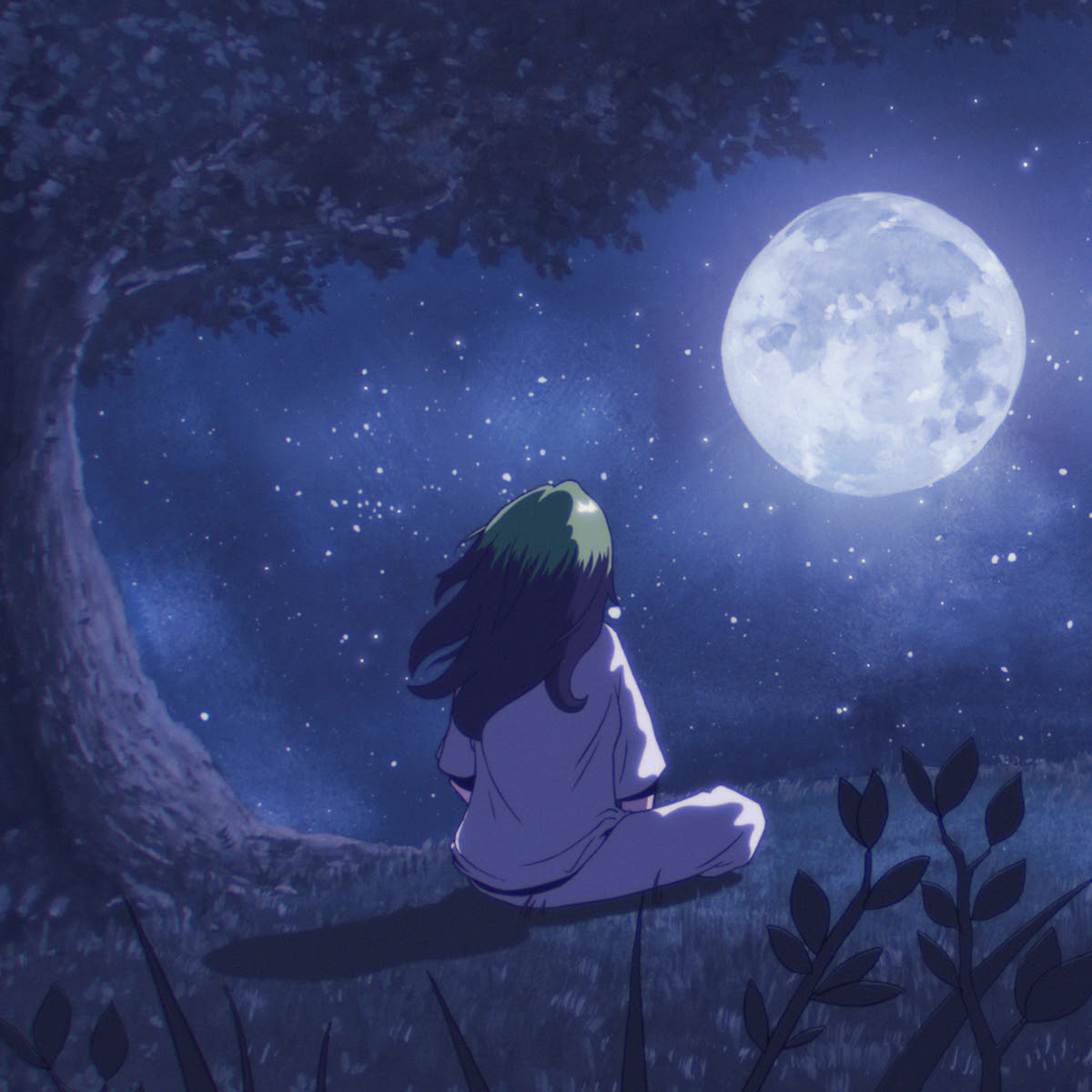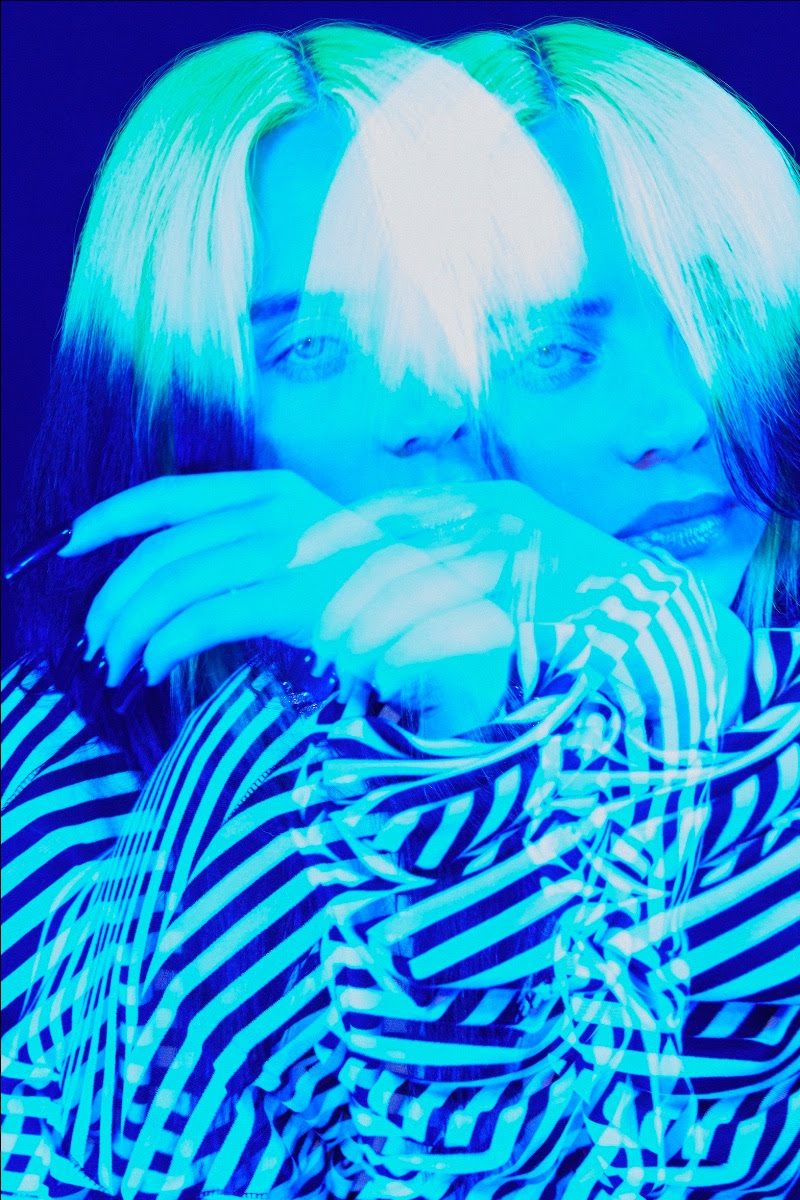
Billie Eilish hasn’t let a lockdown slow her incredible momentum, releasing her newest single “my future” and its accompanying music video on Thursday. The song is stylistically the Billie the world has come to know and adore, but with a jazzy production reminiscent of the early 2000’s work of R&B mainstays like Corinne Bailey Rae that sets it apart from her previous ballads.
Eilish loves to teeter back and forth between a silly, hyper, irreverent Billie and a more understated, introspective Billie. Despite its mid-track beat pickup, “my future” is undoubtably the latter; ASMR Billie if you will. The beautifully animated Miyazaki-esque music video, done by Australian artist Andrew Onorato illustrates this perfectly, showing a moody Billie gazing up at the moon in the middle of a dark, rainy night. Eilish has leaned into this persona more and more with her post-debut album releases, from the slow burn of “everything i wanted” to her sultry take on the latest James Bond theme song “No Time to Die.”
This side of Billie suits quarantine very well, and if the transition was intentional, was probably smart to pivot to during the current climate. But this version of Eilish’s character always manages to peek through even when bombastic “bad guy” Billie is front and center; it is the version of her at her most natural and comfortable, perhaps indicating her more bouncy antics are just as much defense mechanism as they are persona. Part of that is due to Eilish’s breathy and often quiet vocal delivery, but mostly it is because of the raw emotion she exhibits effortlessly on more subdued tracks like “wish you were gay” and “i love you.” That ever emerging personality is what indicates that this supposed shift is genuine, and not simply a calculated move à la Taylor Swift to most effectively match her art to the present state of the world.
Eilish’s current front echoes the popular youth imagery of the lonely sad girl pop star alone in her room quietly writing lyrics. In fact, while promoted as a song created in quarantine, “my future” really is no different behind the scenes from the majority of Eilish’s releases. Eilish after all made her name making music with her brother FINNEAS in her bedroom, eschewing all other collaboration out of pure shyness. This concept of the “bedroom pop” artist is nothing new, with musicians like Clario and Rex Orange County centering their brands around their songwriting processes. Billie even explicitly connects herself to the genre by stylizing all her track titles in lowercase, a popular trend amongst bedroom artists.
That is why artists that appeal to Gen-Z have adapted so well to honing their craft and online presences through lockdown. Artists like Twenty One Pilots, Alec Benjamin, Lauv and Charli XCX, who released an entire album created over a six-week period of lockdown, have all thrived artistically during the pandemic. They have spent their burgeoning careers learning the ropes of social media and the art of the online persona. Working from home and building a brand remotely is nothing new to them, especially for those like Eilish who were creating their most successful work from their bedrooms before COVID-19 was even on the global radar.

Which brings us back to “my future” itself, specifically its mood and lyrics. Eilish wrote the song at the beginning of quarantine with brother FINNEAS, and it shares a remarkably upbeat outlook on life given the times. Proclaiming to be “in love with [her] future,” Billie has a refreshingly positive perspective on our current situation. The song’s second verse meanwhile illustrates her satisfaction with her own self-company despite societal standards telling her she needs a life partner to experience true happiness:
“I know supposedly I’m lonely now
Know I’m supposed to be unhappy
Without someone
But aren’t I someone?”
Eilish is happy with herself as a partner, lockdown or not, and she has happy predictions for her personified future. She adopts the mantra popular with young people today that a love interest does not define them, nor does their pursuit of one, if they even have the interest. That positive swing also echoes the current youth mindset. Sadcore might be the “in” mood of Gen-Z music, but the broader culture is one of optimism, despite the exasperated-with-the-crumbling-world tone many young people seem to adopt. Gen-Z are politically active, they raise awareness for causes that matter to them, they make their voice heard, they fight for change. So while the general tone of voice is self-deprecating, the feeling behind the words looks positively toward the future.
https://www.instagram.com/p/CDCORx5lVzA/
That is what has unofficially maintained Eilish’s Gen-Z poster child status. She understands how her generation thinks, but doesn’t need to craft her art or personality to appeal to the crowd because she already naturally fits the mold. “my future” is a wonderful microcosm of that sentiment.


